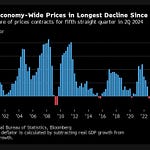
TL;DR: The Government has adopted some of the US-style ‘Green’ industrial policy that is proving so effective in ramping up emissions reductions there, announcing the spending of $140 million from the Climate Emergency Response Fund to pay for almost half of a new electric arc furnace at NZ Steel’s Glenbrook plant.
In an immediate response, National Leader Christopher Luxon accused the Government of corporate welfare and said NZ Steel’s Australian parent BlueScope should have paid for all of the furnace, which will cut Aotearoa’s emissions by 800,000 tonnes a year — the equivalent of the emissions from all of Christchurch’s 300,000 cars and a full 5.3% of the country’s entire emissions reduction budget for 2026-2030.
But, in my view, Luxon has again fallen into Labour’s trap, prompting a kneejerk reaction that makes him seem extreme and captured by NZ Initiative views, given NZ Steel has no need to reduce its emissions, which are exempted from having to be paid for in the Emissions Trading Scheme, and has said it would shut down Glenbrook if it was forced to join the ETS, which is the assumption implicit in Luxon’s challenge.
This is money well spent and completely in tune with the pivot globally to using Green Industrial policy to urgently cut emissions.
Paying subscribers can see more detail and analysis below the paywall fold and in the podcast above, which includes the audio of my questions and answers to PM Christopher Luxon, Chris Hipkins, Energy Minister Megan Woods and Climate Change Minister James Shaw about why climate spending is limited by a fiscally-neutral stance, what more could be done to ‘buy’ cheap emissions elsewhere in Aotearoa, rather than spending billions on overseas credits as is currently planned, and whether the spending saved Glenbrook from closure. I have now opened this up for public reading, listening and sharing after asking my paying subscribers. Many thanks for their support.
$140m well spent to cut emissions massively

The Government announced yesterday it would spend $140 million of Climate Emergency Response Fund (CERF) money to pay for almost half of a new electric arc furnace at NZ Steel’s Glenbrook mill. The furnace will use scrap metal that would otherwise have been sent overseas and cut emissions by 800,000 tonnes at an effect cost of $16.20 a tonne, which is a fraction of the current (very low) price of $55/tonne) and delivers 5.3% of the emissions reductions needed by the entire country in its official budgets from 2026-2030.
“When I said I wanted us as a government to focus on investing in the things that can make the biggest difference, this is the sort of thing that I had in mind. It is incredibly good value for money.
“Working alongside industry, co-investment from government can make a big difference. It can significantly reduce our emissions. It can ensure that we are creating new jobs and protecting existing jobs, whilst also protecting vital supply chains for our overall economy.” PM Chris Hipkins speaking at the announcement of the arc furnace investment at Glenbrook, which Lynn and I attended.
This is the sort of Government-led investment intervention now championed by US President Joe Biden in his game-changing Inflation Reduction Act passed by Congress last year, which invests over a third of a trillion US dollars to subsidise catalyse private investment in renewable energy infrastructure to reduce emissions dramatically and fast. The European Union and others are now playing catch-up, planning their own subsidies for emissions reductions that drop the previous orthodoxy that prioritised fiscal rectitude and debt reduction over ‘corporate welfare’ or subsidies to reduce emissions.
The self-limiting approach of NZ’s ‘fiscally neutral’ stance
Aotearoa is still pursuing a ‘fiscally neutral’ approach to climate policy that means the CERF is fully funded from Emissions Reduction Scheme revenue, rather than using the Crown’s balance sheet, as it should in my view if any Government wants to treat climate change as an inter-generational issue. But this announcement signals a welcome ramping up of the Government’s ambitions, albeit still within the ‘fiscal envelope’ prescribed by the CERF and its Government Investment in Decarbonising Industry (GIDI) Fund.
Treasury estimated in this Climate and Fiscal Assessment report (page 80) in April this year the Crown could have to spend between $3.3 billion and $23.7 billion on credits overseas by 2030, depending on credits prices ranging from NZ$41/tonne to NZ$227/tonne. That means ‘buying’ credits domestically for any less than those prices will reduce Aotearoa’s future liability. So why isn’t the Government doing a lot more of this sort of bulk-buying of domestic emissions reductions right now? It has limited its response through its ‘fiscally neutral’ approach that restrains the size of the CERF to equal ETS revenues.
I asked Hipkins about this fiscal envelope approach and potentially expanding the ‘purchase’ of emissions reductions locally, instead of buying credits overseas. That could include ‘buying’ credits by subsidising e-bike use, buying electric buses, converting roads to cycle and bus lanes, and walkways. In response, he said:
“I wouldn't rule out us making further investments in GIDI-type programs in the future.” Hipkins
Luxon steps into Labour’s trap, yet again
National leader Christopher Luxon yesterday accused the Government of paying ‘corporate welfare’ to NZ Steel’s ASX-listed Australian owner, BlueScope Steel, saying BlueScope could have paid the full $300 million cost of the furnace itself.
“I thought that announcement was outrageous, actually, because it just says to me that this is a Government that's got its priorities all wrong.
"Just this week, this Budget couldn't find money to actually help support Kiwis going through a tough cost of living crisis. But all of a sudden they can find $140 million as a subsidy paid for by Kiwi taxpayers and give it to a large foreign, multinational, profitable company.” Christopher Luxon told reporters yesterday afternoon, via Newshub.
So what about farmers and Air NZ too?
Luxon, a former CEO of Air New Zealand, added he was on the side of the “Kiwi battlers” who were against subsidising the furnace of a profitable multi-national company.
So does that mean Luxon is against the Government allowing companies who compete with the rest of the world and are profitable from keeping their free credits under the existing scheme? Would that include agricultural companies, such as Fonterra? Or Rio Tinto, which employs thousands in Southland at its Tiwai Point aluminium smelter? And how about Air New Zealand, which gets free credits for the fuel it uses on international routes, competing against other airlines that don’t have to buy credits. Surely, Christopher Luxon knows about Air New Zealand’s profitable use of those free credits?
Apparently not, as he stepped into Labour’s trap with both feet yesterday afternoon (bolding mine).
"We really applaud what NZ Steel is doing here. I've gone and met with the CEO and the management teams and saw the site myself last year. I really like the direction of where they're going, but they are quite capable of stomaching and fronting up that $140 million themselves to get that transition away," he said.
"That transition away will be good for them in the long term because they'll end up actually not having to deal with a higher carbon price down the road and it'll be better for them profitability-wise." Luxon.
That’s not what NZ Steel CEO Robin Davies and BlueScope Steel CEO Mark Vassella said at the event announcing the deal that Lynn and I attended yesterday. They said the investment was not viable without the subsidy and that the alternative of being forced into the ETS would also force the closure of Glenbrook because steel makers overseas don’t have to buy emissions credits.
So why didn’t Luxon know this or think through what he was saying? Surely he knew NZ Steel had no incentive to reduce emissions because of its exemptions under the ETS? His comments suggest he is ok with shutting down Glenbrook and favours pulling other companies into the ETS that are currently not there. Expect a ‘clarification’ in the next few days.
Luxon looks captured by the NZ Initiative’s purist approach on this, which is to argue that the ETS should be the only policy designed to reduce emissions and all emitters should be included and the price should be allowed to equilibriate to achieve emissions reductions. The problem with that is National has yet to announce a policy and is expected to be very unlikely to allow the inclusion of agricultural emissions, or those of internationally competitive emitters. His chief policy adviser is Matt Burgess, a former staffer at the NZ Initiative.
Elsewhere in the news this morning
Fire doors in budget accommodation towers locked, but approved
In local scoops this morning, Tom Hunt reports for The Post-$$$ that Loafers Lodge had just one working ground floor exit after the main front door to the 112-person-capacity boarding house was locked shut because of damage in the days before last week’s fatal fire.
Also, George Block reports for NZ Herald-$$$ that the twin Empire Apartment towers for students off Symonds Street in Auckland was approved as compliant by a building inspector despite Auckland Council concerns about its main fire doors being locked. Loafers Lodge was also approved for conversion to multiple rooms on its top floor in 2008 despite Fire and Emergency concerns about access to escape routes.
Elsewhere, Jamie Morton reports for NZ Herald this morning there are concerns about low Covid vaccination rates going into winter, with only a third of people aged 50 to 64 having received their second booster dose, while the rate for over-65s is just under 70%. This age group is where the bulk of hospitalisations and deaths to date are concentrated. The Government is not running high-profile vaccination campaigns anymore, given the political unpopularity of Covid restrictions.
The latest from China vs US
There was good and bad news in the wider geo-strategic conflict between the United States and China over the weekend. US President Joe Biden said he wanted to improve relations Reuters, despite an earlier G7 statement he signed accusing China of coercion and using non-market policies.
China responded by saying the United States was the ‘coercer’ and then banned US chips firm Micron from selling chips to the operators of China’s key infrastructure and security assets. Reuters
Also overseas, Ukraine admitted it had lost most of Bakhmut to Russian forces, although it also secured the use of US F16 fighter jets in a move seen tipping the balance in the long run in Ukraine’s favour, as former Editor of The Economist Bill Emmott points out here in his Substack.
Scoops and must-reads/watches elsewhere this morning
The WSJ has the scoop on how Jeffrey Epstein appears to have tried to blackmail Bill Gates.
This documentary on modern slavery in Aotearoa last night on TVNZ’s Sunday is compelling.
Useful Op-Eds elsewhere this morning
‘Treat the Health Crisis as an emergency’
Former Te Whatu Ora Chair Rob Campbell gave a speech to a Women in Health event on Friday night that was attended by 90 health professionals. The speech was reproduced online in full yesterday on NZ Herald in front of the paywall. Here’s a selection of quotes from the speech (bolding mine):
The simple point is that there is an emergency in our health services. The current leadership of that service from the Beehive, to the Ministry, to Te Whatu Ora and even more broadly through the sector is failing to grapple with the emergency or even to effectively triage its complex presentation. Only those actively engaged in the heart of an emergency can effectively respond. The job of leadership is to empower and support them. I think they mostly know that and genuinely want to do so.
But some of what they need to hear is not all that palatable to them. The Minister found an effective way of cutting off my own warnings, but it is damn sight harder to cut off the warnings from you here tonight, as good a proxy for the health workforce as there is.
I am not an expert in health services. I had a role and I have an active interest. I failed in the role at Te Whatu Ora. I should have been far more disruptive and insistent on inclusive disruption than I was. By “inclusive disruption” I mean the promotion of a positive radical change process (which Pae Ora:Healthy Futures is as an aspiration) by empowering key actors in support of the change. Radical positive change will not occur by decree, by central plan, or dare I say it, by standard public service management process.
One of the problems leading to emergency in our health services system is that too many people without genuine expertise and understanding, without genuine lived and worked experience, have had and retain too much influence. Too many consultants and officials and politicians (and yes, board members) who think they know best constructing plans for others to follow. Some of these are elegant and at some level many are sound and aspirational. But few are grounded in current genuine experience.
Make immediate decisions on equity and other pay and sector funding claims which show good faith, intent and market realism. Many of these are simply delayed inevitable costs, which have significant indirect cost impacts anyway.
Fund this as Government would fund any other emergency of this magnitude.
Activate an immediate and substantially stronger shift in emphasis and funding to kaupapa Maori health and social services in partnership with Whanau Ora and Te Aka Whai Ora. Rob Campbell
National grandee unleashes on Luxon
Former National cabinet minister Philip Burdon has written a strong Op-Ed for The Post-$$$ on Christopher Luxon and the National Party (bolding mine):
National is in danger of being seen as an Auckland-centric urban-based party, unsympathetic to and out of touch with provincial and rural New Zealand.
National has got to take pride in its own ideological commitment to private enterprise and personal responsibility, aggressively articulating its own ideological beliefs and positive policy solutions, as opposed to bland and imprecise criticisms of the current Government's policies.
Complimentary to the policy debate is the perception of leadership, and clearly this is emerging as an increasing concern for National. To the surprise of many, Chris Hipkins has emerged as a credible and competent replacement for Ardern, respected and accepted by his caucus and the country.
Christopher Luxon has successfully united the National caucus after four leadership changes in five years, but has conspicuously failed to personally inspire the electorate. His continuous loss of popularity in the opinion polls, if it continues, will become a dangerous negative.
Chat of the day so far
Ka kite ano
Bernard
PS: And aren’t Lynn’s pics great!














Share this post